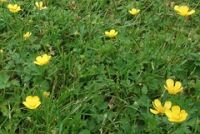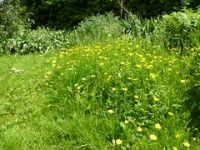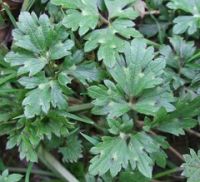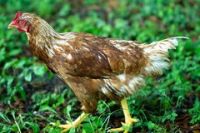How To Clear Creeping Buttercup From Your Garden

 In an organic garden, chemical control is, of course, never the answer. The first stage in controlling this weed is understanding how it behaves. In wet conditions, the plant will tend to reproduce by sending out runners and will often quickly overrun very damp, heavy, waterlogged areas. One key to controlling it in these conditions is improvement of the soil with the addition of organic matter, and through planting that will help reduce waterlogging.
In an organic garden, chemical control is, of course, never the answer. The first stage in controlling this weed is understanding how it behaves. In wet conditions, the plant will tend to reproduce by sending out runners and will often quickly overrun very damp, heavy, waterlogged areas. One key to controlling it in these conditions is improvement of the soil with the addition of organic matter, and through planting that will help reduce waterlogging.
 In dry conditions, the plants will tend to reproduce by seed rather than primarily by runners. In these circumstances, plants are usually easier to hoe out and remove. Though of course, it is important to do so before the plants set seed.
In dry conditions, the plants will tend to reproduce by seed rather than primarily by runners. In these circumstances, plants are usually easier to hoe out and remove. Though of course, it is important to do so before the plants set seed.
Clearing larger areas of creeping buttercup is usually achieved by frequent and vigorous hoeing, digging and harrowing in hot weather. All root and runner sections must be gathered up and removed (or burned) to prevent re-rooting.
In a no-dig garden, where soil disruption is kept to a minimum, such invasive actions may be undesirable. Creeping buttercup may still be controlled by means of sheet mulching – though cover must be comprehensive and if eradication is desired, it may be necessary to consider black plastic sheeting.
 Another option is to reduce the spread of the plants by introducing livestock. Interestingly, while larger livestock will usually avoid eating these plants, and it can cause diarrhoea in cattle and sheep, chickens and geese will readily eat the creeping buttercup leaves. Chickens will also scratch up runners and help disturb the soil sufficiently to reduce the spread. Partridges, pheasants and wood pigeons will eat creeping buttercup seeds.
Another option is to reduce the spread of the plants by introducing livestock. Interestingly, while larger livestock will usually avoid eating these plants, and it can cause diarrhoea in cattle and sheep, chickens and geese will readily eat the creeping buttercup leaves. Chickens will also scratch up runners and help disturb the soil sufficiently to reduce the spread. Partridges, pheasants and wood pigeons will eat creeping buttercup seeds.
Vigorous cover crops and the avoidance of bare soil can also help to limit the spread of creeping buttercup. So, while it may be difficult to eliminate this plant from your garden entirely, there is much you can do to make sure that it does not take over entirely in your organic growing areas.